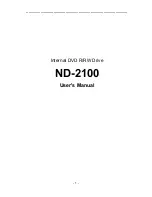
English (GB)
21
9.1 Menu OPERATION
The first display in this menu is this:
9.1.1 Setpoint
Setpoint set
Actual setpoint
Actual value
Set the desired setpoint in [m] in this display.
In control mode proportional pressure, the setting range is from 1/
4 to 3/4 of maximum head.
In control mode constant pressure, the setting range is from 1/8
of maximum head to maximum head.
In control mode constant curve, the setpoint is set in % of the
maximum curve. The curve can be set within the range from min.
curve to max. curve.
Select one of the following operating modes:
• Stop
• Min. (min. curve)
• Max. (max. curve).
If the pump is connected to an external setpoint signal, the value
in this display will be the maximum value of the external setpoint
signal. See section
Setpoint and external signal
The setpoint cannot be set if the pump is controlled via external
signals (Stop, Min. curve or Max. curve). The R100 will give this
warning: External control!
Check if the pump is stopped via terminals 2-3 (open circuit) or
set to min. or max. via terminals 1-3 (closed circuit).
See section
.
Setpoint and bus communication
The setpoint cannot be set either if the pump is controlled from an
external control system via bus communication. The R100 will
give this warning: Bus control!
To override bus communication, disconnect the bus connection.
See section
.
9.1.2 Operating mode
Select one of the following operating modes:
•
Normal
(duty)
• Stop
• Min.
• Max.
The operating modes can be selected without changing the
setpoint setting.
9.1.3 Fault indications
In E-pumps, faults may result in two types of indication: alarm or
warning.
An alarm fault will activate an alarm indication in the R100 and
cause the pump to change operating mode, typically to stop.
However, for some faults resulting in alarm, the pump is set to
continue operating even if there is an alarm.
A warning fault will activate a warning indication in the R100, but
the pump will not change operating or control mode.
Alarm
In case of alarm, the cause will appear in this display.
Possible causes:
• No alarm indication
• Too high motor temperature
• Undervoltage
• Mains voltage asymmetry (11-22 kW)
• Overvoltage
• Too many restarts (after faults)
• Overload
• Underload (11-22 kW)
• Sensor signal outside signal range
• Setpoint signal outside signal range
• External fault
• Other fault.
If the pump has been set up to manual restart, an alarm indication
can be reset in this display if the cause of the fault has
disappeared.
Warning (only three-phase pumps)
In case of warning, the cause will appear in this display.
Possible causes:
• No warning indication
• Sensor signal outside signal range
• Relubricate motor bearings (only 11-22 kW). See section
19.2 Relubrication of motor bearings
.
• Replace motor bearings, see section
• Replace varistor (only 11-22 kW). See section
19.4 Replacement of varistor (only 11-22 kW)
.
A warning indication will disappear automatically once the fault
has been remedied.
Note
The indication "Warning" only applies to three-phase
pumps.
Содержание TPE 2000 Series
Страница 1: ...TPE TPED Series 2000 Installation and operating instructions GRUNDFOS INSTRUCTIONS ...
Страница 2: ...2 ...
Страница 877: ...877 ...
Страница 878: ...878 ...
















































